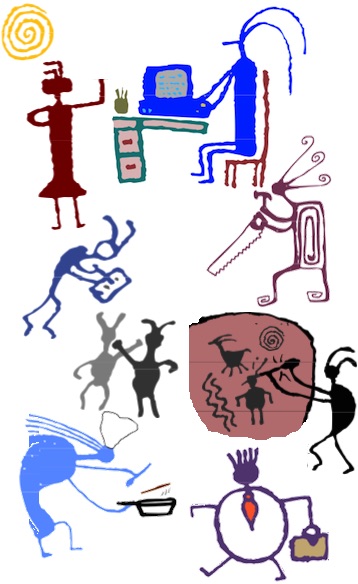 Most practitioners in volunteer management and community engagement don’t have time to review academic literature to see if there might be information that’s helpful in their work – and even if they do have time, academic language can be inaccessible for non-academics. I try to read as much as I can and then summarize and pass on the information that can help practitioners in their work, or even just give them ammunition for a project or funding proposal.
Most practitioners in volunteer management and community engagement don’t have time to review academic literature to see if there might be information that’s helpful in their work – and even if they do have time, academic language can be inaccessible for non-academics. I try to read as much as I can and then summarize and pass on the information that can help practitioners in their work, or even just give them ammunition for a project or funding proposal.
Below are links to two academic papers that are worth at least a skim by anyone trying to use web sites to encourage philanthropy, including volunteering. The reference lists at the end of each papers are gold mines of research for further reading:
Persuasion in Prosocial Domains: Explaining the Persuasive Affordances of Volunteering
by Peter Slattery, Patrick Finnegan and Lesley Land, all three of the Australian School of Business, UNSW Australia, and Richard Vidgen of Hull University Business School, University of Hull, UK. Presented at the Twenty Second European Conference on Information Systems, Tel Aviv, 2014.
Abstract: As technology becomes increasingly pervasive and invasive, it increasingly facilitates and instigates behaviour. Prosocial behaviours, such as volunteering, activism and philanthropy, are activities that are considered to be particularly beneficial to others. Prosocial behaviours are important within IS as: (i) they are encouraged by IS stakeholders including volunteering organisations and charities, and; (ii) they contribute to tackling social issues. However, while information technology is poised to become increasingly important for facilitating prosocial behaviour, little is known about how digital artefacts can encourage it. To address this research gap, this study seeks to explain how website features persuade in prosocial online contexts. The study uses the Repertory Grid Technique (RGT) to examine individuals’ experiences of persuasion on live volunteering websites. The analysis reveals that ease of use, trust, and creating positive emotion are important factors in persuading users to volunteer.
Examining How Perceptions of Websites Encourage Prosocial Behaviour
by Peter Slattery, Patrick Finnegan and Richard Vidgen of Australian School of Business, UNSW Australia. Presented at the Thirty Seventh International Conference on Information Systems, Dublin 2016.
Abstract: Organisations are increasingly reliant on information and communications technology (ICT) to encourage prosocial behaviour (i.e., volunteering, philanthropy and activism). However, little is known about how to use ICT to encourage prosocial behaviour. Given this research gap, the objective of this study is to outline and test a research model that assesses the role of specific perceptions of websites in encouraging prosocial behaviour. To do this, we review the literature to derive a theoretical model of relevant perceptions. We then test the extent to which this model can predict participants’ volunteering and philanthropic behaviour subsequent to their usage of a website that encourages prosocial behaviour. The findings are expected to contribute by (i) giving insights into how perceptions of websites encourage prosocial behaviour, (ii) explaining the roles of negative and positive affect in ICT domains, and (iii) developing a “persuasiveness of website scale” to help IS researchers to measure this construct.
In addition, Mr. Slattery’s 2016 PhD thesis is Explaining How Websites Are Used to Encourage Volunteering and Philanthropy. The thesis restricted from public access until March 2018, but some of its research is repeated in the aforementioned papers.
Also see this list of research and evaluations of virtual volunteering, as a practice in general or focused on specific projects, on the Virtual Volunteering wiki.
